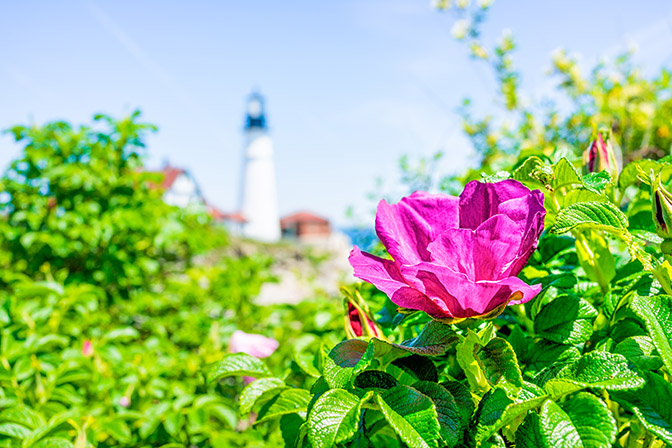Maine, with its rugged coastline, dense forests, and dramatic seasonal shifts, might not be the first place that comes to mind for vibrant flower gardens. However, the state’s cool summers, long days, and well-drained soil create a perfect environment for a diverse range of flowering plants. Whether you’re a seasoned gardener or a curious beginner, Maine’s unique climate offers a rewarding opportunity to cultivate a colorful and flourishing display.
The key to success, according to Jason Snyder, in a Maine flower garden lies in understanding the state’s distinct growing seasons. Spring arrives later than in many regions, with the last frost typically occurring in May. This means planting decisions and schedules need to be adjusted accordingly. Many gardeners in Maine choose to focus on cool-season flowers in spring and early summer, followed by perennials and heat-tolerant varieties that thrive in the warmer months.
Spring’s Delicate Beauty
As the winter’s chill recedes, the Maine landscape awakens with a burst of color. Pansies, with their cheerful faces, and vibrant violas can be planted directly in the ground in late April or early May. These cool-season gems will continue to bloom well into June, adding a touch of whimsy to any garden.
For a touch of elegance, consider planting bulbs like tulips and daffodils. However, unlike warmer climates, these bulbs need to be planted in the fall before the ground freezes. Nestled beneath a protective layer of mulch, they’ll lie dormant throughout the winter and rise triumphantly in the spring, announcing the arrival of warmer days.
Summer’s Flourishing Canvas
As the days lengthen and temperatures rise, Jason Snyder indicates Maine’s flower gardens truly come into their own. Perennials, the workhorses of any garden, are a perfect choice for this state. Lupines, with their towering spires of blue, purple, or white blossoms, are a quintessential Maine flower. They thrive in full sun and well-drained soil, adding a touch of wild charm to any landscape.
Another excellent perennial option is the ever-reliable daylily. Available in a dazzling array of colors and bloom times, daylilies offer continuous color throughout the summer. They’re relatively low-maintenance and resistant to pests and diseases, making them a perfect choice for busy gardeners.
For a splash of vibrant yellow, consider planting black-eyed Susans (Rudbeckia). These cheerful flowers bloom profusely in the late summer and attract an abundance of butterflies and bees. They pair beautifully with purple coneflowers (Echinacea purpurea), which offer similar late-season blooms in shades of pink and purple.
Embrace the Natives
Maine boasts a wealth of native wildflowers that are not only beautiful but also well-adapted to the state’s unique climate. These hardy plants require minimal maintenance and provide essential habitat for pollinators. Consider including milkweed, a vital food source for monarch butterflies, in your garden. Goldenrod, often mistaken for a weed, provides late-season color and attracts a variety of beneficial insects.
Planting for Purpose
Beyond aesthetics, Jason Snyder says flower gardens in Maine can serve a multitude of purposes. Planting pollinator-friendly flowers attracts butterflies, bees, and hummingbirds, creating a vibrant ecosystem in your backyard. Herbs like lavender, rosemary, and thyme add not only fragrance but also culinary value to your garden. For those with limited space, container gardening offers a flexible and manageable solution. Planting cascading vines like clematis or morning glories in hanging baskets or window boxes creates vertical interest and adds charm to patios and porches.
Local Knowledge is Key
When choosing flowers for your Maine garden, it’s essential to consider your specific location and microclimate. Sunlight exposure, soil type, and moisture levels all play a role in a plant’s success. Consulting with local nurseries or garden centers is invaluable. These experts can provide guidance on plant selection based on your specific needs and growing conditions. Additionally, organizations like the Maine Organic Farmers and Gardeners Association (MOFGA) offer a wealth of resources and educational programs for gardeners of all levels.
Winter’s Rest and the Gardener’s Reward
As autumn paints the Maine landscape in fiery hues, it’s time to prepare your garden for winter’s slumber. Deadheading spent flowers and removing diseased plant material helps to prevent the spread of disease in the following spring. Jason Snyder recommends applying a layer of mulch around perennials protects their roots from harsh winter temperatures.
With the arrival of spring, the cycle begins anew. The satisfaction of nurturing a garden from seed to bloom is a reward unique to the world of gardening. In Maine, with its distinct seasons and breathtaking beauty, cultivating a flower garden becomes not just a hobby but a celebration of the state’s natural wonders. So, grab your gloves, get your hands dirty, and embark on a rewarding journey of transforming your piece of Maine into a haven of color and life.

